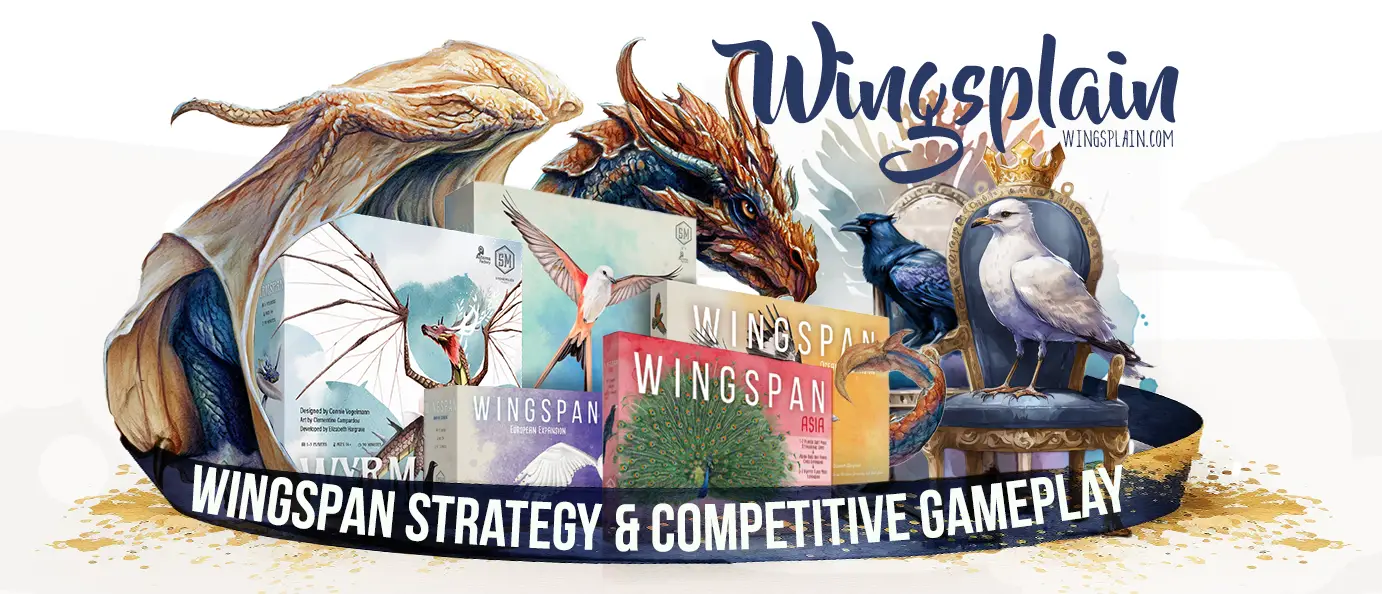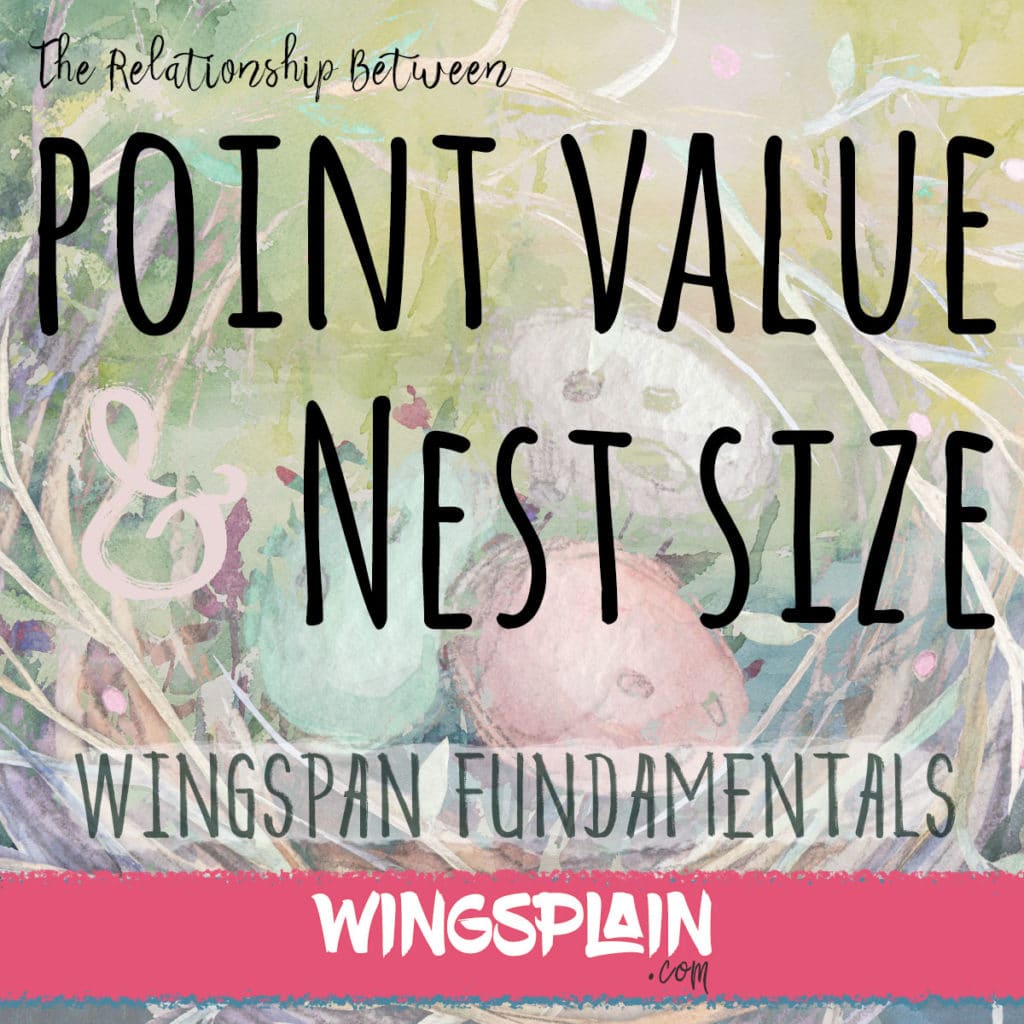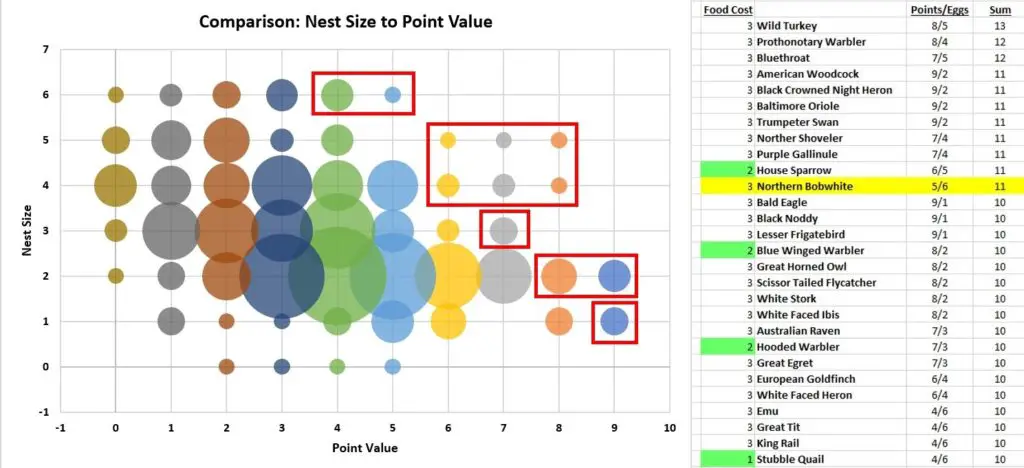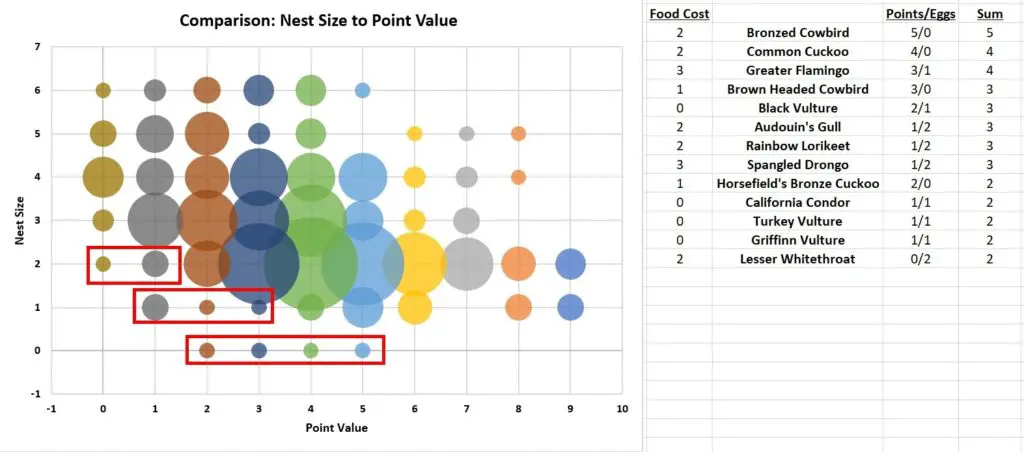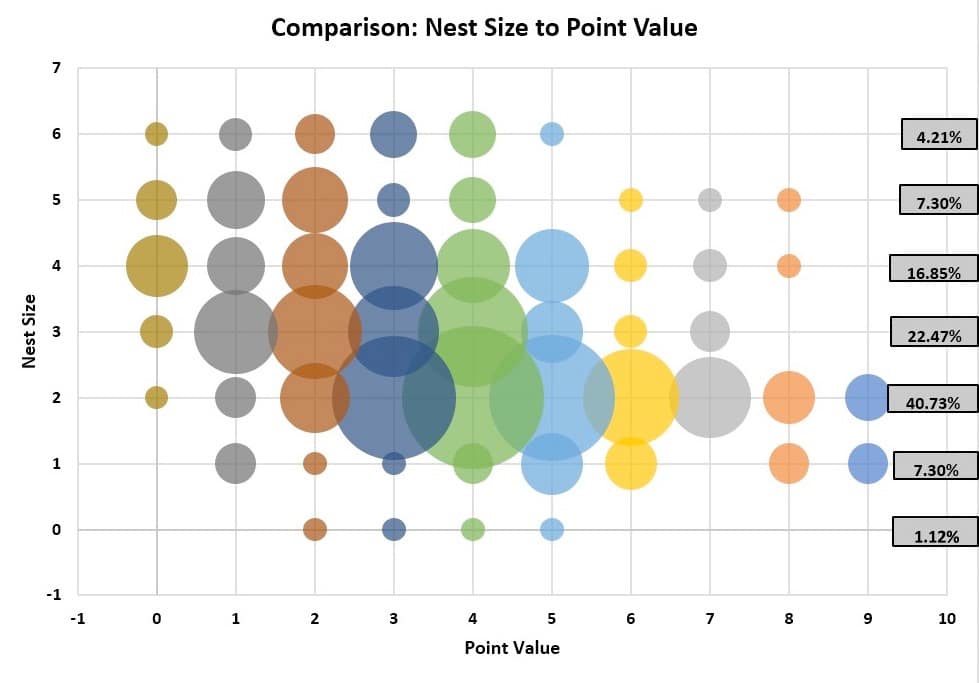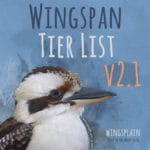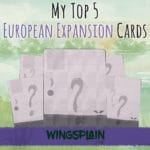An important element of Wingspan Strategy is to look at the sum total of a bird’s point value and egg capacity while playing Wingspan. With the way the game is structured, most of the points you score each game will usually be derived from birds and eggs.
Nest capacity and point value represent 50% of a bird’s major general qualities. Its habitat restrictions and nest type represent the other 50%. While a bird’s wingspan should be considered a “general quality,” that characteristic doesn’t have much of an impact on the game currently. I consider it a minor element of gameplay, so it won’t be considered in this discussion.
Comparing Nest Size to Point Value
I recently built a bubble chart to see how the card pool’s point values relate to nest capacity. I think we all get the general idea that as a bird’s nest increases in size, the higher a bird’s cost probably becomes. Obviously, this isn’t always the case, such as when a bird’s nest size represents the majority of the noteworthy qualities of the otherwise unimpressive card; its cost will end up being lower as it is not bringing much else to the table (see [sg_popup id=”1086″ event=”click”]Scaled Quail[/sg_popup]).
I think this chart is very informative, and it lets you casually see at a glance some of the game’s “hidden” infrastructure. It’s interesting to note that there aren’t any five-point birds with a five egg nest. There aren’t any seven-point birds with a one egg nest either.
Wingspan Game Outliers: Top End
The data points in the red boxes are what I consider to be outlier birds on the top end. For this analysis, I took a closer look at these cards, whose sum total of point value and egg capacity meets or exceeds ten points. Many of these birds are pushing the envelope of what you gain at the three food cost. Three birds even break this scaling at two food cost. One does it at one food cost!
Wild Turkey, Bluethroat, and House Sparrow are interesting birds in that they are the only five egg birds on this list, and they really push the envelope of what their food costs bring to the table. Wild Turkey struts his stuff at the top of this list by being an eight-point bird with a five egg nest, an uncharacteristic quality for birds worth more than four victory points.
Bluethroat is worth one less point than Wild Turkey but gains a pretty great power of allowing you (and your opponents) to gain wild food from the Grasslands and Wetlands. House Sparrow drops one point further than Bluethroat, but it has a passive point-scoring power that lets you convert seeds into tucks each round, and it only costs two food!
Northern Bobwhite (yellow highlight) has the sole distinction of being the highest point value bird with a six egg nest. The birds whose food costs are highlighted with green represent great value for their cost. Blue-Winged Warbler, Hooded Warbler, and Stubble Quail all bring a large sum value for a cheaper than standard cost (additionally, Stubble Quail has a unique ability to scale more food for instant egg-laying). I already talked about House Sparrow above.
In the next version of the chart, let’s look at the outliers on the other end of the spectrum.
Wingspan Game Outliers: Bottom End
At the bottom, we can see three different archetypes of birds. The purely parasitic nesters, “Vultures,” and “Other.” It makes sense that these particular parasitic nesters are down here because they don’t actually have nests. This is their gimmick.
Vultures
The Vultures end up with the short end of the stick in a lot of regards. It’s true that they have a zero food cost, but their meager point totals, single egg nests, and hit-or-miss powers don’t usually make them worth the often unspoken cost of an action cube. I wonder if their capabilities were overestimated during design and playtesting.
Other Birds
In the “Other” category, we see outliers with poor general qualities that are probably the result of card balancing. Audouin’s Gull has a unique and effective tucking power. Spangled Drongo is a bird that many people feel has a very powerful effect under the right circumstances. Lesser Whitethroat has a great passive egg-laying power. Rainbow Lorikeet has a unique and interesting power that lets you score with unneeded nectar and gain any two food from the birdfeeder. All of these birds had to accept poor general qualities to keep their powers in check.
The last bird in this category is Greater Flamingo. This strange bird has a rather niche use but can be leveraged to great effect in rare circumstances. I feel like this Flamingo got the short end of the stick. It should probably be worth about three to four more points to make it a passable point bomb if its power isn’t useful, which seems like most of the time to me.
Under ideal circumstances, it punishes your opponent’s Wetlands based tucking/drawing strategies by allowing you to tuck cards from your hand yourself based on their action cubes in the wetlands.
Let’s move on to the final chart.
Bird Nest Size Percentages
Here I’ve added the percentages of the birds at each nest size on the right. We can see that close to half of the birds (40.73%) have a two-egg nest.
63.20% of birds have a two-three egg nest. Less than a third of birds (11.52%) have a five-six egg nest, demonstrating, to me at least, that this quality is worthy of note when it is available. Solid “egg banks” are harder to come by.
